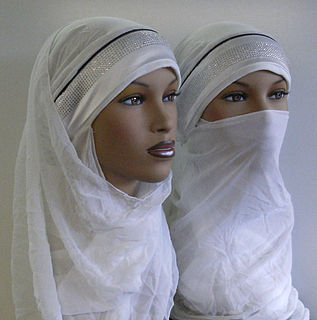 W
WThe abaya "cloak", sometimes also called an aba, is a simple, loose over-garment, essentially a robe-like dress, worn by some women in parts of the Muslim world including North Africa and Middle East and the Arabian Peninsula. Traditional abayat are black and may be either a large square of fabric draped from the shoulders or head or a long kaftan. The abaya covers the whole body except the head, feet, and hands. It can be worn with the niqāb, a face veil covering all but the eyes. Some women also wear long black gloves, so their hands are covered as well. It is common that the abaya is worn on special occasions, such as Mosque visits and Islamic Holiday celebrations for Eid al-Fitr and Eid al-Adha. The Indonesian traditional dress kebaya gets its name from the abaya.
 W
WBattoulah, also called Gulf Burqa, is a metallic-looking fashion mask traditionally worn by Muslim Arab women. The mask is mainly worn in the Persian gulf region, including Bahrain, Kuwait, United Arab Emirates, Oman and Qatar, as well as in southern Iran. Wearing the mask usually indicated that the person is married. The mask was also used as a ruse to fool enemies into thinking that the women they spied from a distance were men.
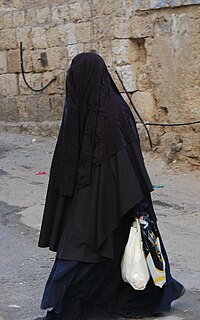 W
WA boshiya is a Middle Eastern-and specifically Persian Gulf-style full black veil which covers the wearer's face completely with no openings for the eyes and is traditionally worn with an abaya or other overgarment.
 W
WIn Australia, there is an ongoing debate over the possibility of a ban on the wearing of burqa and niqab, conservative forms of dress for Islamic women. There are currently 14 nations that have banned the burqa and niqab, including Austria, France, Belgium, Denmark, Germany, Netherlands, Latvia, Bulgaria, Cameroon, Chad, Congo, Gabon, China and Morocco.
 W
WA burkini is a style of swimsuit for women. The suit covers the whole body except the face, the hands and the feet, while being light enough for swimming. The amount of skin covered is about the same as the person wearing a wetsuit and a swimming cap.
 W
WA burqa or burka, also known as a chadaree in Afghanistan or a paranja in Central Asia, is an enveloping outer garment which covers the body and the face that is worn by women in some Islamic traditions and one small sect of approximately 600 practitioners in the Jewish tradition. The Arab version of the burqa is called the boshiya, and is usually black in color.
 W
WÇarşaf, also written as charshaf, is a simple, loose over-garment, essentially a robe-like dress. It is a Turkish version of Arabic Abaya and also similar to the niqab and the chador. Literally translated, çarşaf means "bed sheet".
 W
WA chādor, also variously spelled in English as chadah, chad(d)ar, chader, chud(d)ah, chadur, and naturalized as, is an outer garment or open cloak worn by many women in Iran, Iraq, and some other countries under the Persianate cultural sphere, as well as predominantly Shia areas in public spaces or outdoors. A chador is a full-body-length semicircle of fabric that is open down the front. The garment is pulled over the head and is held closed at the front by the wearer; the chador has no hand openings, buttons or clasps. It may also be held closed by being tucked under the wearer's arms.
 W
WThe dupattā is a shawl traditionally worn by women in the Indian subcontinent. The dupatta is currently used most commonly as part of the women's shalwar kameez outfit, and worn over the kurta and the gharara.
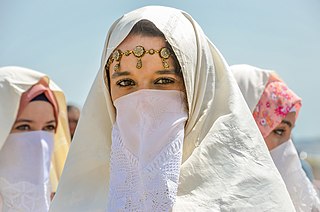 W
WThe haik is a traditional women's garment worn in the Maghreb region. It is usually white. It consists of a rectangular fabric covering the whole body, 6 by 2.2 metres in length, rolled up then held at the waist by a belt and then brought back to the shoulders to be fixed by fibulae. It can be white or black.
 W
WA head tie is a women's cloth head scarf that is commonly worn in many parts of West Africa and Southern Africa. Head ties are also commonly worn by Married Jewish Women as symbol of marriage. The head tie is used as an ornamental head covering or fashion accessory, or for functionality in different settings. Its use or meaning can vary depending on the country and/or religion of those who wear it. Among Jewish women, the Biblical source for covering hair comes from the Torah in the book of Bamidbar Parshas Nasso which contains the source for the obligation of a married woman to cover her hair. An eesha sotah is a woman whose husband suspects her of having acted immorally. The Torah commands the Kohein to take various steps to demonstrate that the sotah has deviated from the modest and loyal path of most married Jewish women. Among the procedures, the pasuk clearly states: “ufora es rosh haisha…” and he shall uncover the hair of the head of the woman(5:18). One can only uncover something that has previously been covered; in this case the Torah is referring to the married woman’s hair.
 W
WA headscarf is a scarf covering most or all of the top of a person's, usually women's, hair and head, leaving the face uncovered. A headscarf is formed of a triangular cloth or a square cloth folded into a triangle, with which the head is covered.
 W
WThe Republic of Turkey has been a secular state since the constitutional amendment of 1937. Mustafa Kemal Atatürk introduced the secularization of the state in the Turkish Constitution of 1924, alongside his reforms. Atatürk never forbade the headscarf, but actively discouraged its use in public venues. The headscarf was banned in public institutions because of the 'public clothing regulation' issued after the 1980 coup and began to be implemented in a radical way after the 1997 military memorandum. The ban on the headscarf for public personnel was lifted by the democratization package on 1 October 2013 and with the amendment made in article 5 of the dress code regulation, restrictive provisions were lifted. These were in accordance with the Kemalist ideology, with a strict appliance of laïcité in the constitution. The issue of the headscarf debate has been very intense and controversial since its ban, along with other prominent religious symbols, in public buildings such as government institutions and public schools, similar to policies in France and Mexico. Turkey is a secular country and over 95% of its people are Muslims. It has resulted in a clash between those favouring the secular principles of the state, such as the Turkish Armed Forces, and religious conservatives, including some Islamists.
 W
WHijabophobia is a type of religious and cultural discrimination against Muslim women who wear the hijab. The discrimination has had manifestations in public, working and educational places.
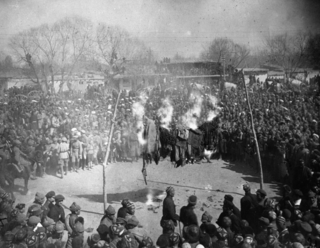 W
WHujum was a series of policies and actions taken by the Communist Party of the Soviet Union, initiated by Joseph Stalin, to remove all manifestations of gender inequality, especially on the archaic systems of female veiling and seclusion practiced in Central Asia. The era was often symbolized by the burning of the face-veil that women in the Muslim majority areas of the Soviet Union wore, but removal of the veil was not the sole goal of the campaign. The party recast their message of class revolution into the novel lexicon of women's liberation. By abolishing the means of oppression apparent in Central Asia and heralding in women's liberation, the Soviets believed they could clear the way for the construction of socialism. The campaign's purpose was to rapidly change the lives of women in Muslim societies so that they may participate in public life, paid work, education, and ultimately membership in the Communist Party. It was originally conceived to enforce laws that gave women in patriarchal societies equality by creating literacy programs and bringing women into the labor force.
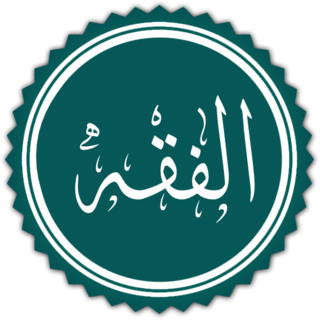 W
WThe intimate parts of the human body which must, according to Islam, be covered by clothing. Exposing the intimate parts of the body is unlawful in Islam as the Quran instructs the covering of male and female genitals, and for adult females the breasts. Exposing them is normally considered sinful. Exposing intimate parts when needed, such as going to the toilet or bathing, falls under a specific set of rules. Precisely which body parts must be covered varies between different schools of Islamic thought.
 W
WThe term jilbāb or jilbaab refers to any long and loose-fit coat or outer garment worn by some Muslim women. Wearers believe that this definition of jilbab fulfills the Quranic choice for a hijab. Jilbab, jubbah or jilaabah is also known as chador by Persian speakers in Iran and Afghanistan. The modern jilbāb covers the entire body. Some women will also cover the hands with gloves and the face along with a niqāb. In recent years, a short visor is often included to protect the face from the tropical sun.
 W
WOn 8 January 1936, pro-western ruler Reza Shah Pahlavi of Iran (Persia) issued a decree known as Kashf-e hijab banning all Islamic veils, an edict that was swiftly and forcefully implemented. The government also banned many types of male traditional clothing. Since then, the Hijab issue has become controversial in Iranian politics. One of the enduring legacies of Reza Shah has been turning dress into an integral problem of Iranian politics.
 W
WKimeshek or Elechek is a traditional headgear of married women with children in Kazakhstan, Karakalpakstan and Kyrgyzstan. Kimeshek is also worn by Central Asian Jewish women. Uzbek and Tajik women wear a similar headdress called lachak. Kimeshek is made of white cloth, and the edge is full of patterns. Kimeshek might have different designs and colors based on the wearer's social status, age, and family.
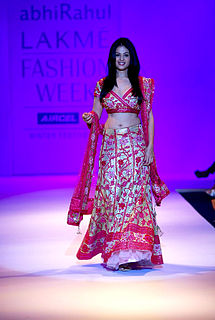 W
WThe lehenga, lehnga or langa is a form of ankle-length skirt from the Indian subcontinent. Different patterns and styles of traditional embroidery are used to decorate the lehenga. Gota patti embroidery is often used for festivals and weddings. The lehenga is sometimes worn as the lower portion of a gagra choli or langa voni. Ghagra in Punjabi and Hindustani, was also used to refer to the half slip or petticoat, a skirt worn as an undergarment below the sari.
 W
WA niqāb or niqaab, also called a ruband, is a garment that covers the face, worn by some Muslim women as a part of an interpretation of hijab. The terms niqab and burqa are often confused; a niqab covers the face while leaving the eyes uncovered, while a burqa covers the entire body from the top of the head to the ground, with only a mesh screen allowing the wearer to see in front of her. According to the majority of Muslim scholars and Islamic schools of thought, face veiling is not a requirement of Islam; however a minority of Muslim scholars, particularly among the Sunni Salafi and Wahhabism movement, assert that women are required to cover their faces in public. Those Muslim women who wear the niqab, do so in places where they may encounter non-mahram (un-related) men.
 W
WIn a predominantly Muslim society, as many as 90% of women in Egypt have adopted a form of veiling. A majority of Egyptian women cover at least their hair with the hijab. A hijab refers to a head covering that is worn by Muslim women. Although the phenomenon of wearing the niqāb, a veil which covers the face is not as common, the niqab in Egypt has become more prevalent. While a few women in Egypt wear a black niqab along with a billowing black abaya as seen in countries such as Saudi Arabia, many choose to wear different colors of the niqab or manipulate the hijab to cover their face. Regardless, the growing trend of munaqqabat, or women who wear the niqab, has alarmed the authorities. They have begun to see this dress as a security threat, because it hides the face, and because it is perceived as a political statement, a rejection of the state in favor of a strict Islamic system.
 W
WParanja or paranji is a traditional Central Asian robe for women and girls that covers the head and body. It is also known as the "burqa" in other languages. It is similar in basic style and function to other regional styles such as the Afghan chadari. The traditional veil in Central Asia worn before modern times was the faranji. The part that covered the face, known as the chachvan, was heavy in weight and made from horsehair. It was especially prevalent among urban Uzbeks and Tajiks. The paranja was worn in Khorezm. It was also worn during the Shaybanids' rule (c.1510–1600).
 W
WThe safseri, sometimes also spelled sefseri, safsari or sefsari, is a traditional Tunisian veil worn by women.
 W
WShayla is an Islamic head gear worn by some muslim women in the presence of any male outside of their immediate family. It is different from a khimar, because it is usually wrapped and pinned. Sometimes it is worn in the form of a half niqab with part of the face still appearing.
 W
WTudong is a Malay word, literally meaning the noun "cover", which is commonly translated/referred to as veil or headscarf in English.
 W
WA veil is an article of clothing or hanging cloth that is intended to cover some part of the head or face, or an object of some significance. Veiling has a long history in European, Asian, and African societies. The practice has been prominent in different forms in Judaism, Christianity, and Islam. The practice of veiling is especially associated with women and sacred objects, though in some cultures it is men rather than women who are expected to wear a veil. Besides its enduring religious significance, veiling continues to play a role in some modern secular contexts, such as wedding customs.
 W
WA yashmak, yashmac or yasmak is a Turkish and Turkmen type of veil or niqāb worn by women to cover their faces in public. Today there is almost no usage of this garment in Turkey. In Turkmenistan, however, it is still consciously used by some married women in the presence of elder relatives of a husband.